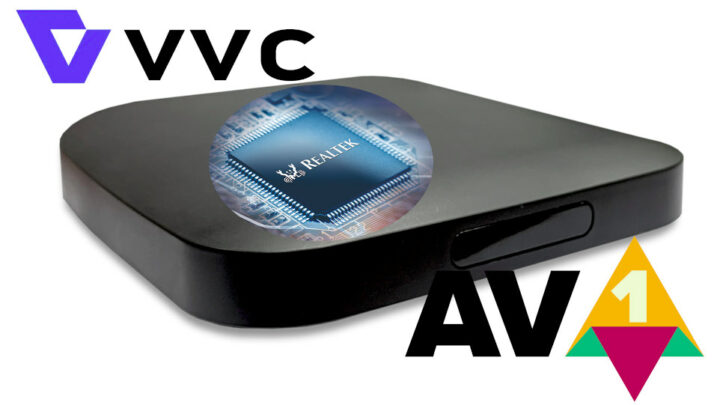Realtek RTD1319D is the first set-top box processor to support H.266 (aka Versatile Video Coding) video compression standard. The new SoC also provides a GPU with 10-bit graphics, support for multiple Conditional Access Systems (CAS), and HDMI 2.1a video output capable of up to 4Kp60 with HDR.
One would have thought the royalty-free AV1 video codec might have killed licensed codecs such as H.266, but it’s clearly not the case, since Realtek decided to launch the RTD1319D processor with the new codec, and the primary reason may be because the H.266/VCC codec was added to the DVB specification last February for both 4K (3840×2160) and 8K (7680×4320) resolutions.
Realtek RTD1319D preliminary specifications:
- CPU – Quad-core Arm processor
- GPU – Unnamed GPU with 10-bit graphics
- Video Output – HDMI 2.1a up to 4Kp60 HDR
- Video Codecs
- 4Kp60 Versatile Video Coding (VVC/H.266)
- 4Kp60 AV1, H.265
- Tuner support
- Built-in DVB demodulators
- Multiple TS interfaces
- Audio – Far-field voice support
- Peripherals – USB 3.0, PCIe
- Multiple Conditional Access Systems (CAS)
Realtek says the chip will offer an “enhanced Android TV Leanback UI performance” and can be used in 4K UHD set-top boxes in combination with Wi-Fi/Bluetooth combo chip from the company, together with its Bluetooth remote control unit solutions.
Sadly, Realtek did not provide the complete details about the RTD1319D processor which was demonstrated at IBC 2022 on September 9-12. But one would think it could share at least some of the specifications from the Realtek RTD1319 SoC with a quad-core Cortex-A55 processor, an Arm Mali-G31 GPU, and Gigabit Ethernet networking given the similar naming convention, but only time will tell. Availability is unclear too, and I would only expect to gain more information about RTD1319D through the launch of customers’ devices based on the processor since there’s not even a product page for the RTD1319 announced two years ago…
Thanks to Dave for the tip.

Jean-Luc started CNX Software in 2010 as a part-time endeavor, before quitting his job as a software engineering manager, and starting to write daily news, and reviews full time later in 2011.
Support CNX Software! Donate via cryptocurrencies, become a Patron on Patreon, or purchase goods on Amazon or Aliexpress





